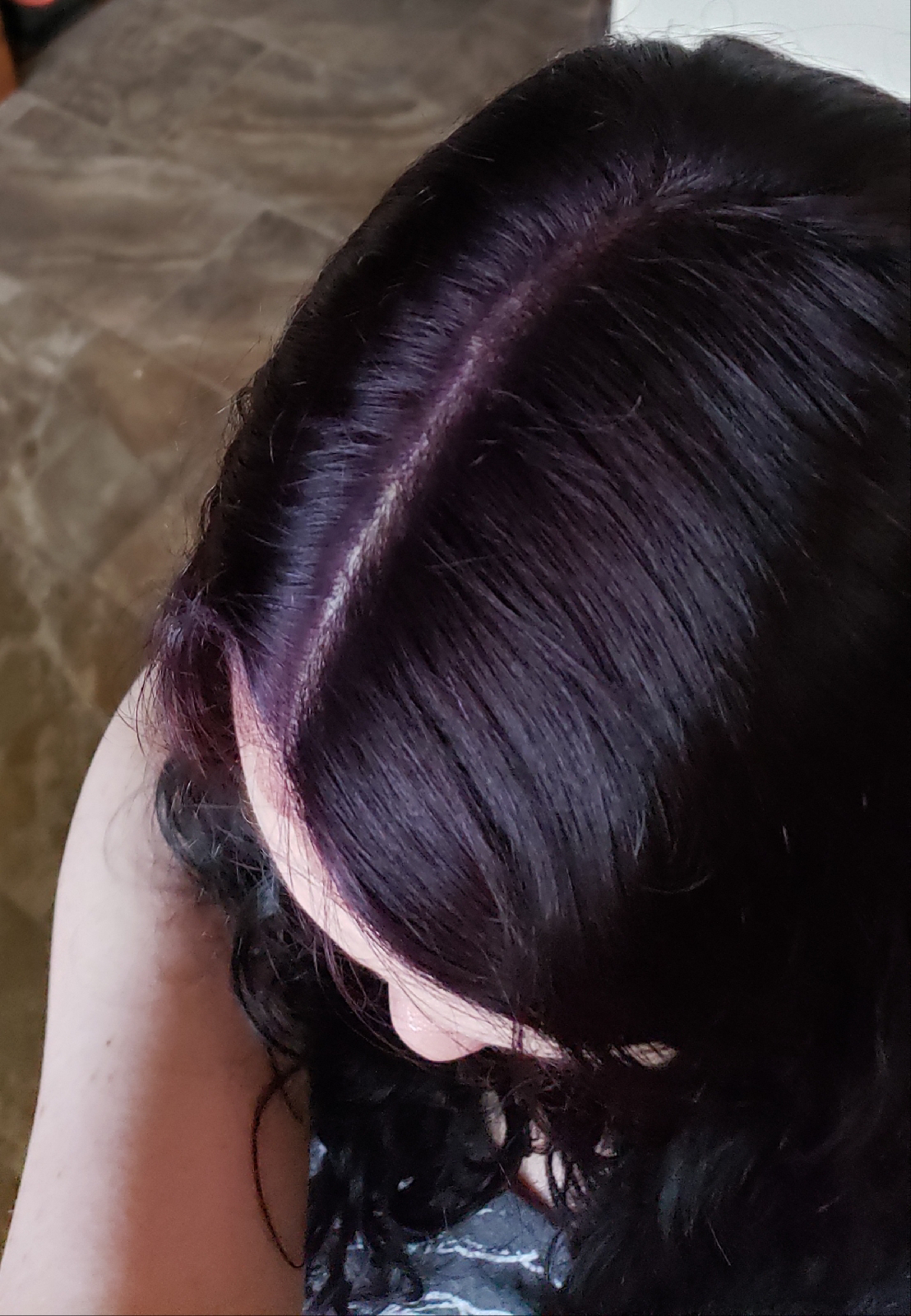Original Method for Reddish Purple (Natural Eggplant Hair Color with Henna & Logwood)

Note that I have a new favorite method, which you can find here . First, here are some images. After rinsing the dye out. Still has residue. The black on the bottom was from prior dye jobs using indigo. After the first wash = residue removed. It will stay at this color. This is the easiest method because it's an all-in-one henna and logwood mix. It was recommended to me on an FB group by someone who has used it for years. I've adapted it for making a logwood infusion, then using the liquid to wet the henna. Using an infusion is better than using the logwood powder directly on your hair because the tiny wood pieces swell to a larger size and become difficult to rinse out. And I added my alum after-soak option for greater permanence (and keeping it pink-purple rather than letting it turn red with time), but some find this step unnecessary. Omit, if you prefer. DO NOT add aloe to this mix as it seems to deactivate the logwood. A small amount of guar or aca...


